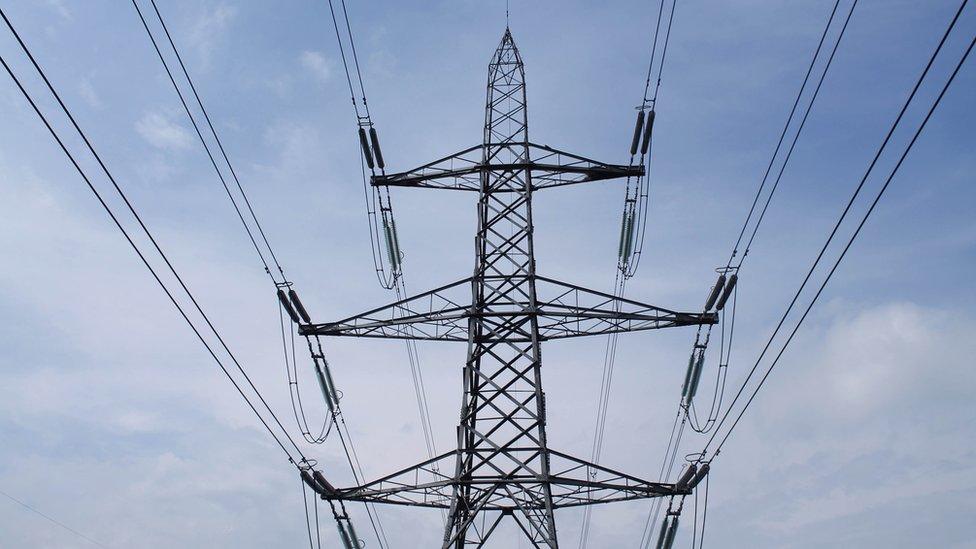UK gets first new-style pylons in a century
- Published

The first 36 of a new T-shaped design of electricity pylon have been wired up, National Grid has announced.
The pylons, the first major UK redesign since 1927, will be rolled out where possible across England and Wales.
Instead of an Eiffel-Tower-style lattice A-frame with a series of arms holding the electricity cables, they are strung below a cross-arm atop a single pole.
The aim is to reduce the visual impact on the environment.
The new design, submitted by Danish company Bystrup, was selected from more than 250 entries in a 2011 competition run by the Royal Institute of British Architects and the government.
At 35m (115ft), they are about a third shorter than traditional high-voltage pylons, with a smaller ground footprint.
The first ones form part of a 57km (35-mile) route that will carry low-carbon electricity between Bridgwater and Portbury, in Somerset.

The pylons will connect the Hinkley Point C nuclear power station to homes
They will connect the Hinkley Point C Nuclear power station to six million homes and businesses, National Grid says.
Hinkley nuclear power station on track for 2026 opening
Hinkley pylon scheme in Somerset given the green light
The electricity supply will be turned on in October.
As part of the project, 249 old-style pylons will be removed.
Their design, submitted by US engineering company Miliken Brothers, was chosen by leading British architect Sir Reginald Blomfield, the designer of London's Lambeth Bridge, in a 1927 competition.
Formally known as "transmission towers", they became known as "pylons" from the Greek word "pyle" meaning "gateway".
Egyptology was all the rage after the 1922 discovery of boy king Tutankhamun's tomb and mummy.
And the public thought the new steel towers resembled the impressive obelisks on either side of the doors of ancient Egyptian temples.

The standard lattice pylon design
There are about 22,000 pylons in England and Wales, covering more than 4,300 miles.
They need to be high to straddle obstacles such as roads, rivers and railway lines and ensure nothing comes too close to them.
The electricity cables on pylons are uninsulated, so there is a very high risk of electric shocks.
But birds are not electrocuted, because they are not touching the ground, so the electricity stays in the power line.